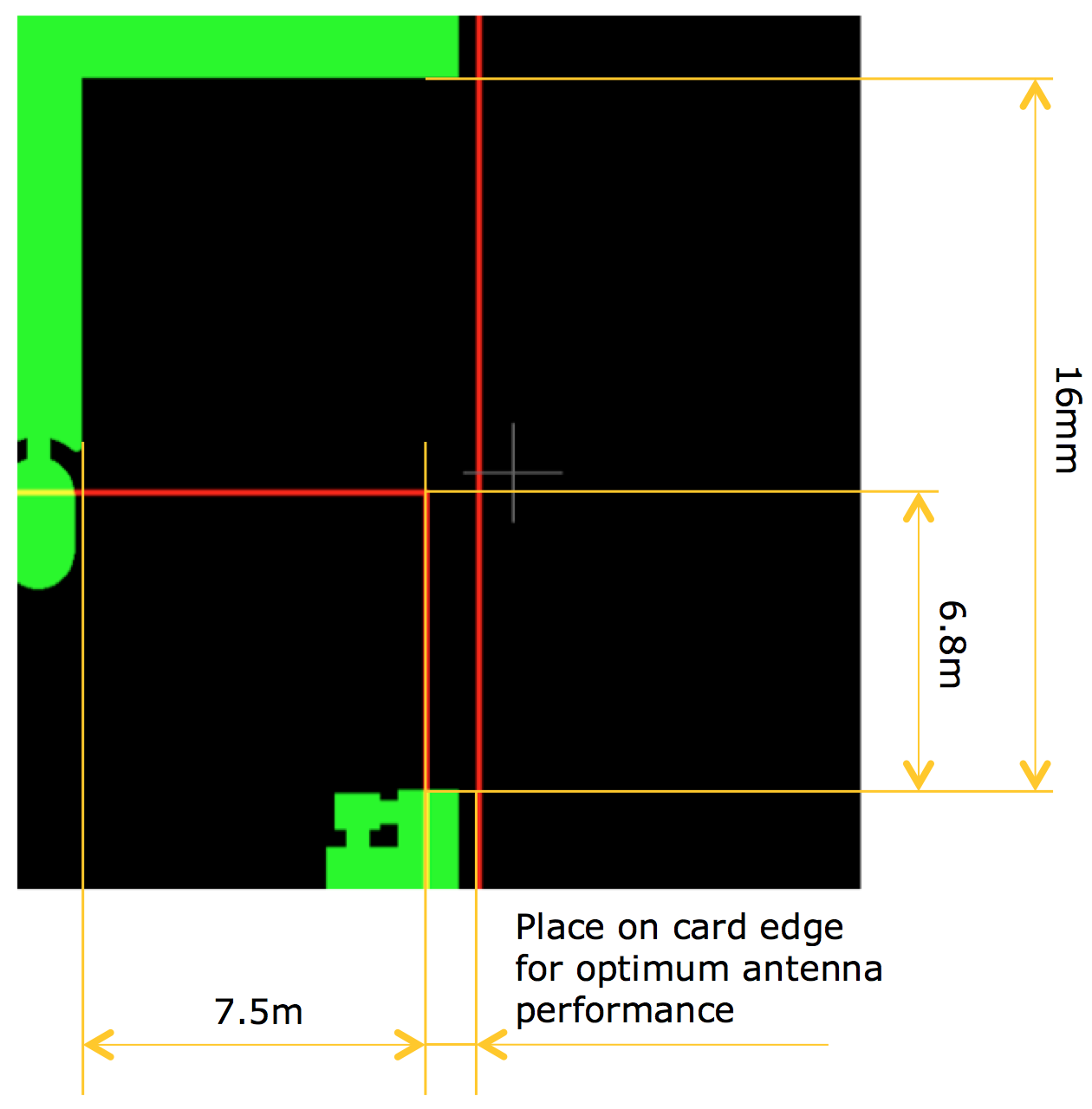Reference Design and PCB mounting
Reference design files¶
A complete reference design including PCB layout and PCB design guidelines is available from LumenRadio to make integration easier. Please send your inquiry to LumenRadio for details.
PCB mounting¶
Internal or External Antenna¶
For short (≤100 meters) distances the internal antenna will perform well. But if the design is to be placed inside a metal enclosure, or if there is a need to cover longer distances, an external antenna is necessary. An external antenna must at least be designed for operation between 2.4 – 2.48GHz with a 50 Ω characteristic impedance.
Internal Antenna¶
If the internal antenna is considered, the product case needs to be of a RF transparent material. The circuit board that will hold TiMo needs to be designed so that the internal chip antenna radiates efficiently. Avoid any ground planes near the antenna chip.
When placing TiMo on a circuit board:
- Place the module as close to the host circuit board edge as possible with the antenna pointing outward.
- Note the absence of ground plane near the chip antenna on the modules´ circuit board.
- Remove any copper from the main board as specified in section “Layout Examples”
- Avoid using metal structures such as mounting hardware close to the antenna chip.
Layout considerations for the main board¶
TiMo has been specifically designed in order to achieve good RF performance. In order to maintain this, there are some guidelines that we would like to stress:
The use of ground planes also on the main board cannot be emphasized enough. Good decoupling of any high speed digital circuitry is a must. Many embedded type microprocessors today have clock frequencies with clocks or overtones that reach well into the GHz range. It is perfectly possible for an embedded design to pass any EMC certification and still cause disturbances that will block the RF reception of the TiMo module. The sensitivity of the TiMo receiver is -96dBm therefore it is recommended to keep disturbances below -100dBm in the frequency range of operation.
A near field probe connected to a spectrum analyzer will show if there are any disturbances present on the 2.45 GHz band generated by the microprocessor or any other device that is placed on the main board. Pay special attention to readymade LAN-products "Server in a RJ connector". They pass EMC certifications, but some of them radiate badly on 2.45 GHz. If disturbances can be seen on a spectrum analyzer - then the TiMo module will have impaired reception.
TiMo has a supply voltage decoupling on the circuit board. The supply voltage still needs to be adequately filtered. If any disturbance or intermittent communication failures occur, as one of the trouble shooting steps - check the supply voltage for drop-outs, switch supply ripple etc.
Layout Example¶
- The TOP layer inside the footprint must be free from copper. There is a ground plane on TiMo, but there are also supply lines. It is an unnecessary risk to rely on solder mask lacquer for isolation.
- The area around the antenna must be kept clear from copper on all layers as depicted in the picture below.

Minimum dimensions for ground plane clearance for optimum antenna performance are shown below:
